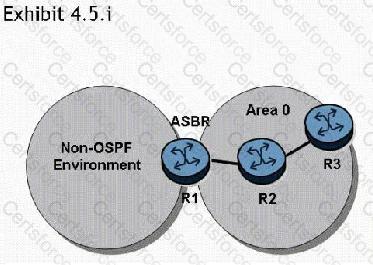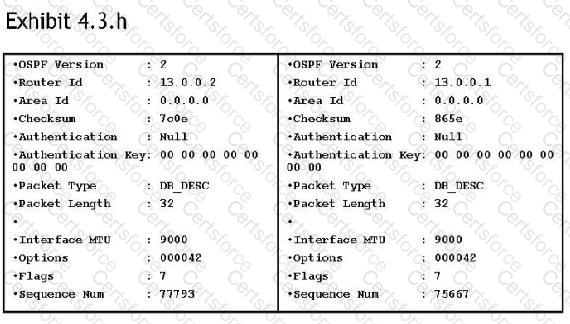Which of the following LSA types stay within an OSPF area, and are not flooded outside of the area? Choose two answers.
Which of the following cannot be used as a matching criterion in route policy statements?
An OSPF ASBR must have at least one interface in the backbone area (area 0)
Which of the following OSPFv3 LSAs have an AS scope?
Identify two attributes of Distance Vector Protocols: (Choose two)
Click the exhibit button.

In the topology shown, router R1 is an ASBR configured to export external routes to OSPF. How many type 4 LSAs will be present in the network?
Which one of the commands below will create a static route to network 2.3.4.0/24 on the Alcatel-Lucent 7750 SR router?
Click the exhibit button.

The OSPF packets shown have been exchanged between two neighbors. What state is the OSPF adjacency in?
Which of the following types of networks are supported on a Nokia 7750 SR for OSPF? Choose two answers.
The Nokia 7750 SR supports which two of the OSPF area types below?